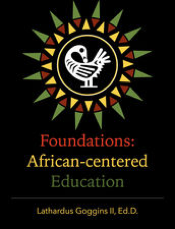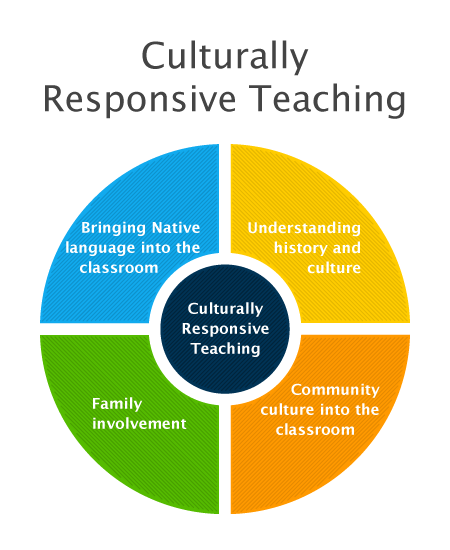

Culturally Responsive Teaching is a pedagogy that recognizes the importance of including students’ culturally references in all aspects of learning.
The significance of CRT is it provides framework and practical approach to instruct, make meaning, and discuss information in a way essential to relevant learning. CRT is a critical factor in what John Dewey (1938) describes as progressive education.
"Traditional education did not have to face this problem; it could systematically dodge this responsibility. The school environment of desks, blackboards, a small schoolyard, was supposed to suffice. There was no demand that the teacher should become intimately acquainted with the conditions of the local community, physical, historical, economic, occupational etc., in order to utilize them as educational resources. A system of education based upon the necessary connection of education with experience must.. take these things constantly into account. ... upon the importance of the participation of the learner in the formation of the purposes which direct his activities in the learning process, just as there is no defect in traditional education greater than its failure to secure the active cooperation of the pupil in construction of the purposes involved in his studying."
Without CRT, a teacher cannot effective engage "the learner in the formation of the purposes" which is essential to “secure the active cooperation”. Moreover, without purpose, a teacher should/cannot expect intelligence or discipline. In that, as Dewey suggested, intelligence is the ability to strategize to execute a purpose and discipline is the commitment to follow the strategy to execute purpose. Not only is "purpose" essential for intelligence and discipline, it is the core criterion for education. So much so, that Dewey warns that to not engage a student's sense of purpose the teacher is creating a slave (i.e. someone who is meant to execute the purposes of someone else).
7 Principles of Culturally Responsive Practices: (1) Communication of High Expectations; (2) Active Learning and Teaching Methods; (3)Student strengths are Identified and Nurtured; (4) Inclusion of Culturally and Linguistically Diverse teaching strategies; (5) Cultural Sensitivity; (6) Supportive Learning Environment Reflecting the Cultures of all Children; and (7) Small Group Instruction.
Specifically, when working with African American students, to be Culturally Responsive Teacher (i.e. to use CRT strategies), one must use African-centered philosophies and techniques.
Culturally Responsive Teaching “look fors”
Culturally Responsive Teaching facilitates rigor by supporting teachers getting the "permission to push" from students and their families/communities
Additional Resources:
John Dewey (1938) Experience & Education
The Seven Principles of Culturally Responsive Teaching - Gary Howard
Culturally Responsive Pyramid Model Practices
Five Steps to Becoming a Culturally Responsive Teacher
Edutopia - Culturally Responsive Teaching
Culturally Responsive Teaching: 4 Misconceptions
Principles for Culturally Responsive Teaching
A Framework for Culturally Responsive Teaching
Culturally Responsive Pedagogy and Practice
Resources for Culturally Relevant Teaching ... https://www.avid.org/CRTresources
Lathardus Goggins II (1996) makes a compelling argument for African centered rites of passage as a factor for positive academic success. Goggins examines the relationship between socialization and the learning process. His analysis is drawn from an extensive literature review of noted scholars and narratives from people involved in the rites process. Goggins frames his discussion with the following questions: 1.How is sense of self dealt within rites of passage, and specifically within African Centered Rites of Passage?; 2. What is the theory regarding the construction of self and its relationship to the educative experience?; 3. What are the operating assumptions about "educating" African Americans?; and 4. In what ways does the rites of passage process influence the educative experience?
Goggins provides an in-depth discussion on the educative process, formation of purpose and discipline, and the tragedy of parental and community non-involvement in educating African American students. He concludes that regardless of funding, teachers, and the latent values in the surrounding environment, African American students can obtain positive academic success. [available on Amazon]
What does it mean to be African-centered?
Africana Cultural Resources [click here]
/